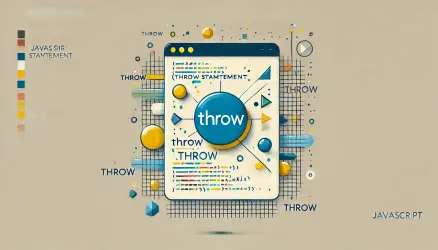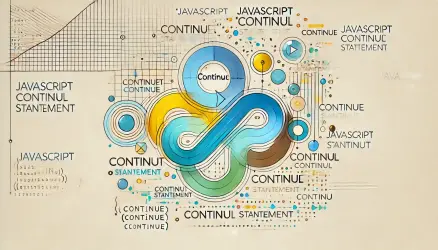One of the most useful features of jQuery is its ability to handle events easily and effectively. Whether it’s responding to user clicks, form submissions, or hover effects, jQuery simplifies event handling with a powerful and flexible API.
In this post, we’ll explore how jQuery can streamline user interactions on your website by handling events efficiently.
Basic Event Handling
Handling basic events in jQuery is straightforward. The most common events include click, hover, focus, and submit. With jQuery, you can attach event handlers to elements using methods like .click() or .on().
// Handle a button click event
$('#myButton').click(function() {
alert('Button clicked!');
});
// Handle a form submission
$('#myForm').submit(function(event) {
event.preventDefault(); // Prevent default form submission
alert('Form submitted!');
});
With this simple syntax, you can easily respond to user interactions and trigger actions when events occur.
Using .on() for Flexible Event Binding
The .on() method in jQuery allows for more flexible event handling. It not only supports multiple events but also enables event delegation, which is particularly useful when dealing with dynamically added elements.
// Attach multiple events with .on()
$('#myElement').on('click mouseover', function() {
alert('Element clicked or hovered!');
});
Using .on(), you can easily manage multiple events with a single handler, making your code more efficient and easier to maintain.
Event Propagation: Bubbling and Capturing
When an event is triggered on an element, it can propagate through the DOM tree in two phases: capturing (downward) and bubbling (upward).
jQuery uses event bubbling by default, meaning the event is first handled by the innermost element and then bubbles up to its parent elements.
// Example of event bubbling
$('#parentDiv').on('click', function() {
alert('Parent div clicked');
});
$('#childDiv').on('click', function(event) {
alert('Child div clicked');
event.stopPropagation(); // Prevents the event from bubbling up to the parent
});
In this example, clicking the child div would also trigger the parent’s event handler, unless event.stopPropagation() is used to stop the event from bubbling. Understanding event propagation is crucial for managing how events are handled in complex layouts.
Event Delegation for Dynamic Content
When dealing with dynamic content (elements that are added to the DOM after the page has loaded), traditional event binding methods like .click() won’t work. Instead, you need to use event delegation with .on() to ensure the event is correctly handled.
// Use event delegation to handle clicks on dynamically added buttons
$(document).on('click', '.dynamicButton', function() {
alert('Dynamically added button clicked!');
});
This allows you to handle events for elements that may not exist when the page initially loads, making your code more robust.
Preventing Default Actions
Some events trigger default browser behavior, such as following a link or submitting a form. If you want to stop the default action and run your own code instead, you can use event.preventDefault().
// Prevent a link from navigating to its URL
$('a').click(function(event) {
event.preventDefault();
alert('Link clicked but not followed!');
});
By using event.preventDefault(), you gain complete control over the user’s interactions with your page.
Simulating Events with .trigger()
jQuery allows you to simulate events programmatically using the .trigger() method. This can be useful when you want to simulate a user interaction, such as triggering a button click or form submission through code.
// Simulate a button click
$('#myButton').trigger('click');
// Simulate a form submission
$('#myForm').trigger('submit');
This method gives you the flexibility to automate interactions without requiring direct user input, which is especially useful in testing or custom workflows.
Event Chaining
jQuery allows you to chain event handlers to multiple elements, simplifying your code even further. You can select multiple elements and apply the same event handler in a single statement.
// Chain event handlers to multiple elements
$('button, a').on('click', function() {
alert('A button or link was clicked!');
});
This makes your code cleaner and reduces repetition by applying the same event to multiple elements.
Event Namespaces
jQuery allows you to namespace events, which is useful when you want to organize your event listeners or remove specific ones later. Namespacing helps in situations where multiple handlers are applied to the same element for different purposes.
// Bind a click event with a namespace
$('#myButton').on('click.customEvent', function() {
alert('Button clicked with a custom event!');
});
// Remove the specific event handler using the namespace
$('#myButton').off('click.customEvent');
This helps you manage and remove event handlers efficiently without affecting other handlers attached to the same element.
Handling Events Once with .one()
In some cases, you may want an event handler to run only once. jQuery’s .one() method allows you to bind an event that will execute only once, making it ideal for scenarios like showing a message or performing a one-time action.
// Execute the event handler only once
$('#myButton').one('click', function() {
alert('This will only happen once!');
});
With .one(), you can ensure that the event handler is triggered just once, automatically removing itself after execution.
Conclusion
jQuery simplifies event handling, making it easy to manage user interactions with minimal code. Whether you’re dealing with basic clicks or complex dynamic content, jQuery provides flexible methods like .on() and .one() to handle events efficiently.
By understanding key concepts like event propagation, default actions, and how to simulate events programmatically, you can take full control of how users interact with your website. Try out the methods discussed in this post to see how you can simplify your event-handling tasks with jQuery!


